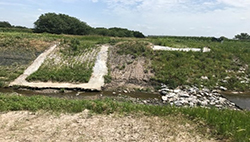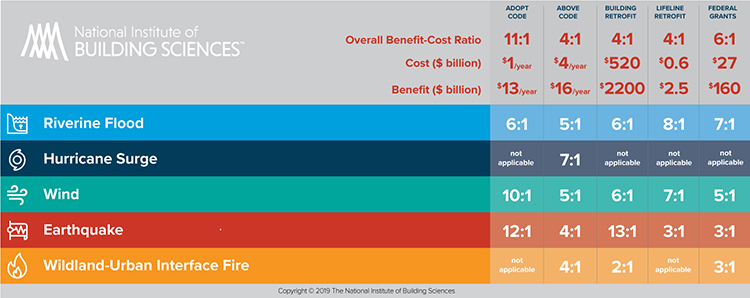STATE HAZARD MITIGATION PROGRAM
 Disasters can happen anytime, anywhere, and in any place. They can cause loss of life, damage buildings and infrastructure, and have devastating consequences for a community's economic, social, and environmental wellbeing. Nationwide, taxpayers pay billions of dollars annually to help communities, organizations, businesses, and individuals recover from disasters. These expenditures don't reflect the actual cost of disasters because tax dollars do not cover additional costs incurred by insurance companies and private entities. Many natural hazards are predictable, and much of the damage and expense caused by these events can be reduced or eliminated.
Disasters can happen anytime, anywhere, and in any place. They can cause loss of life, damage buildings and infrastructure, and have devastating consequences for a community's economic, social, and environmental wellbeing. Nationwide, taxpayers pay billions of dollars annually to help communities, organizations, businesses, and individuals recover from disasters. These expenditures don't reflect the actual cost of disasters because tax dollars do not cover additional costs incurred by insurance companies and private entities. Many natural hazards are predictable, and much of the damage and expense caused by these events can be reduced or eliminated.
 To assist communities in reducing these impacts, the NEMA Hazard Mitigation Unit develops the State Hazard Mitigation Plan (SHMP) and supports local communities with their mitigation planning efforts. The Hazard Mitigation Unit also administers two federal mitigation grant programs, including the Hazard Mitigation Grant Program (HMGP), Building Resilient Infrastructure and Communities (BRIC), and Pre-Disaster Mitigation-Legislature (PDM-L).
To assist communities in reducing these impacts, the NEMA Hazard Mitigation Unit develops the State Hazard Mitigation Plan (SHMP) and supports local communities with their mitigation planning efforts. The Hazard Mitigation Unit also administers two federal mitigation grant programs, including the Hazard Mitigation Grant Program (HMGP), Building Resilient Infrastructure and Communities (BRIC), and Pre-Disaster Mitigation-Legislature (PDM-L).
QUICK LINKS
Hazard Mitigation Assistance Grants
Hazard Mitigation Planning
Hazard Mitigation Resources
Public Assistance
Nebraska's Residential Tornado Safe Room Program
Documents
Hazard Mitigation Program Contact:
Chelsea Harris, State Hazard Mitigation Officer & Program Supervisor
Email: nema.hazardmitigation@nebraska.gov
Nebraska’s Mitigation Goals
The Nebraska State Hazard Mitigation Unit strives to promote a comprehensive state hazard mitigation policy framework, to coordinate federal, state and local hazard mitigation planning and program efforts though a set of goals.
- Promote a comprehensive state hazard mitigation policy framework, to coordinate federal, state and local hazard mitigation planning and program efforts.
- Reduce or eliminate long-term risk to property, including critical facilities and infrastructure, historic, and private property.
- Promote public awareness of hazards and how to reduce their impacts.
- Encourage the development and implementation of long-term, cost effective, and resilient mitigation projects that preserve or restore the functions of natural systems.
- Build stronger by promoting mitigation actions that emphasize sustainable construction and design measures to reduce or eliminate the impacts of natural hazards.
Importance of Mitigation
Mitigation saves! According to analysis from the National Institute of Building Sciences “Natural Hazard Mitigation Saves: 2019 Report”, depending on the hazard and the proposed mitigation action, communities can see up to an 11:1 return on their investment. That means that for every dollar spent on a mitigation action there is a corresponding reduction in recovery costs.